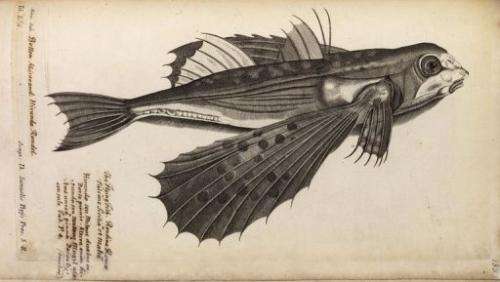Revealed: The fish that nearly sank Isaac Newton

A 300-year-old drawing of a flying fish that nearly scuttled Isaac Newton's world-changing opus on modern physics will be showcased in the Royal Society's online picture library, launched Thursday.
The engraving was first published in 1686 in a lavishly-illustrated book "A History of Fishes," by John Ray and Francis Willughby, the prestigious British academy of sciences said.
The work was ground-breaking but printing it nearly bankrupted the institution.
"This meant that the society was unable to meet its promise to support the publication of Isaac Newton's masterpiece," the Royal Society said.
Newton's work, Philosophiae Naturalis Principia Mathematica ("Mathematical Principles of Natural Philosophy") sets down the principles of the laws of motion and gravity.
Fortunately, fellow scientist Edmund Halley, then a clerk at the Royal Society, saw the promise in Newton's work and raised the funds for it to be published in 1687.
The online library will sport more than 1,000 images from the archives of the world's oldest scientific institution.
(c) 2012 AFP




















